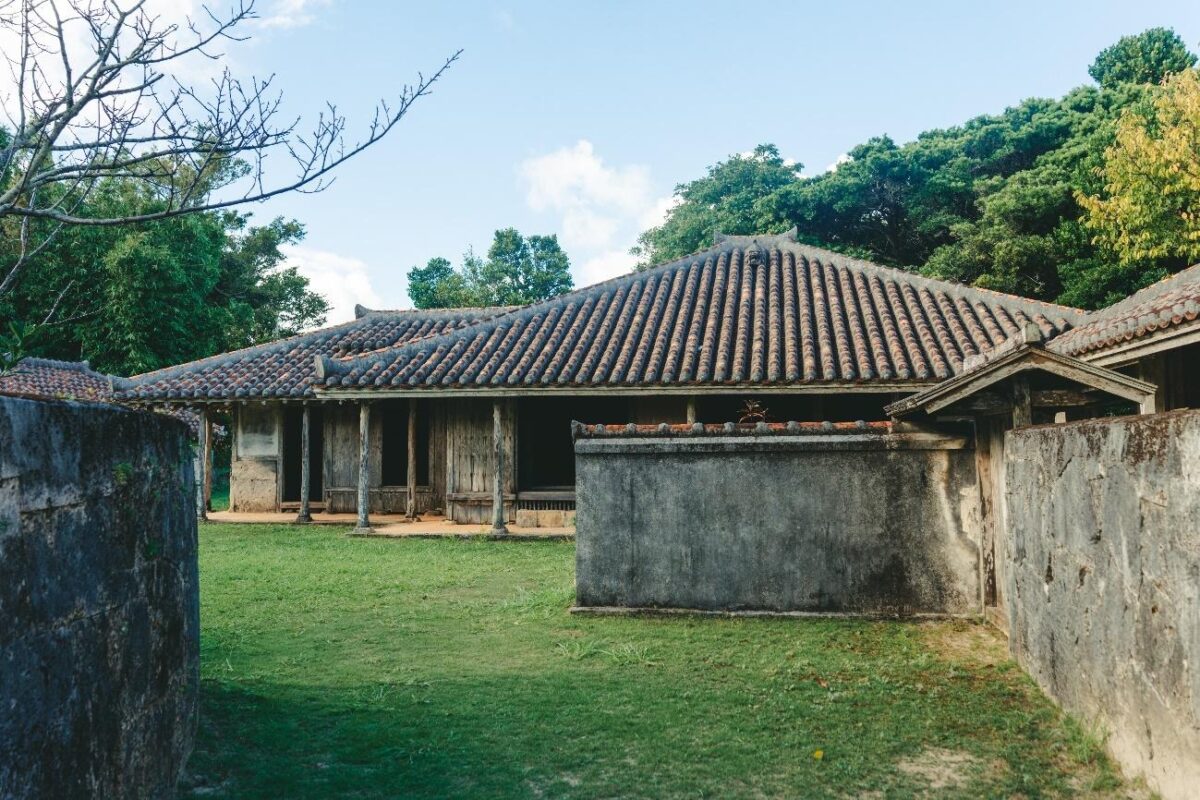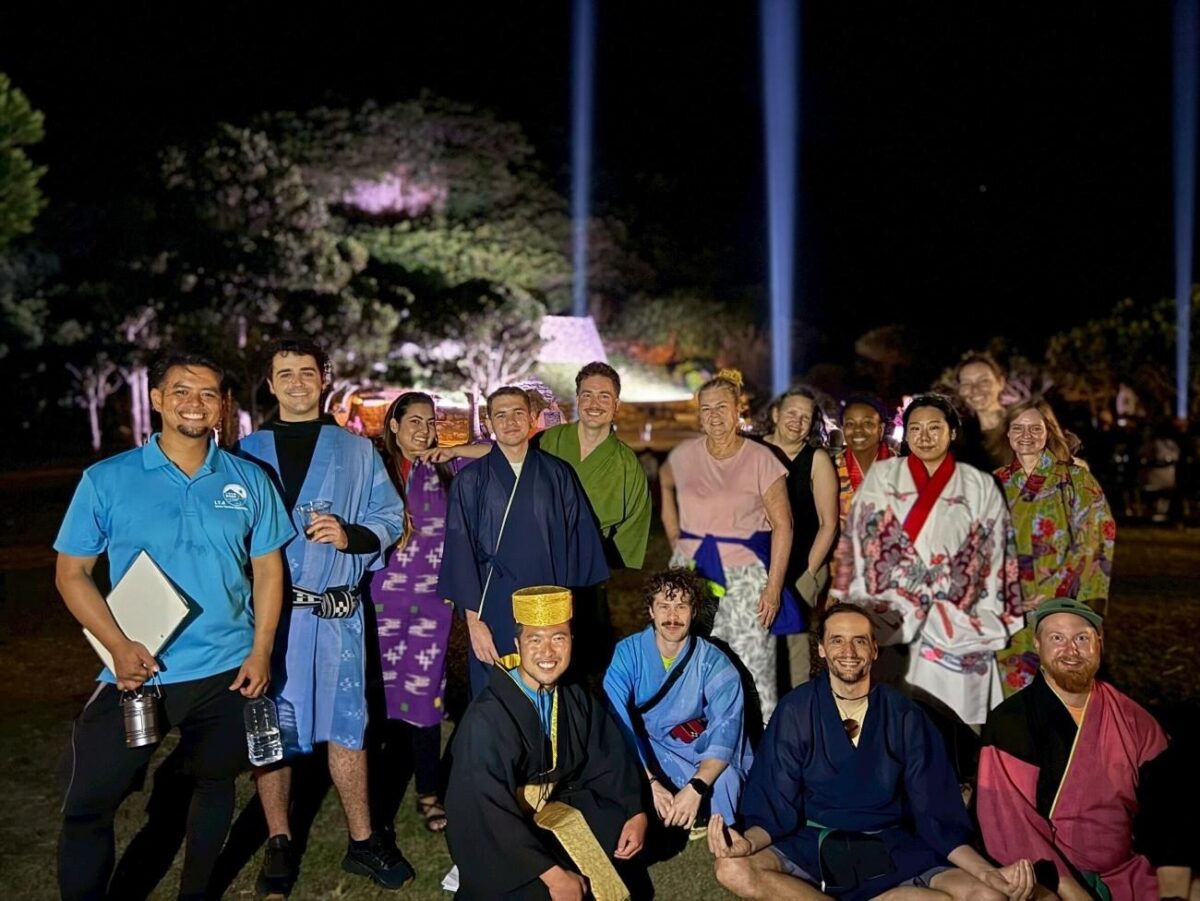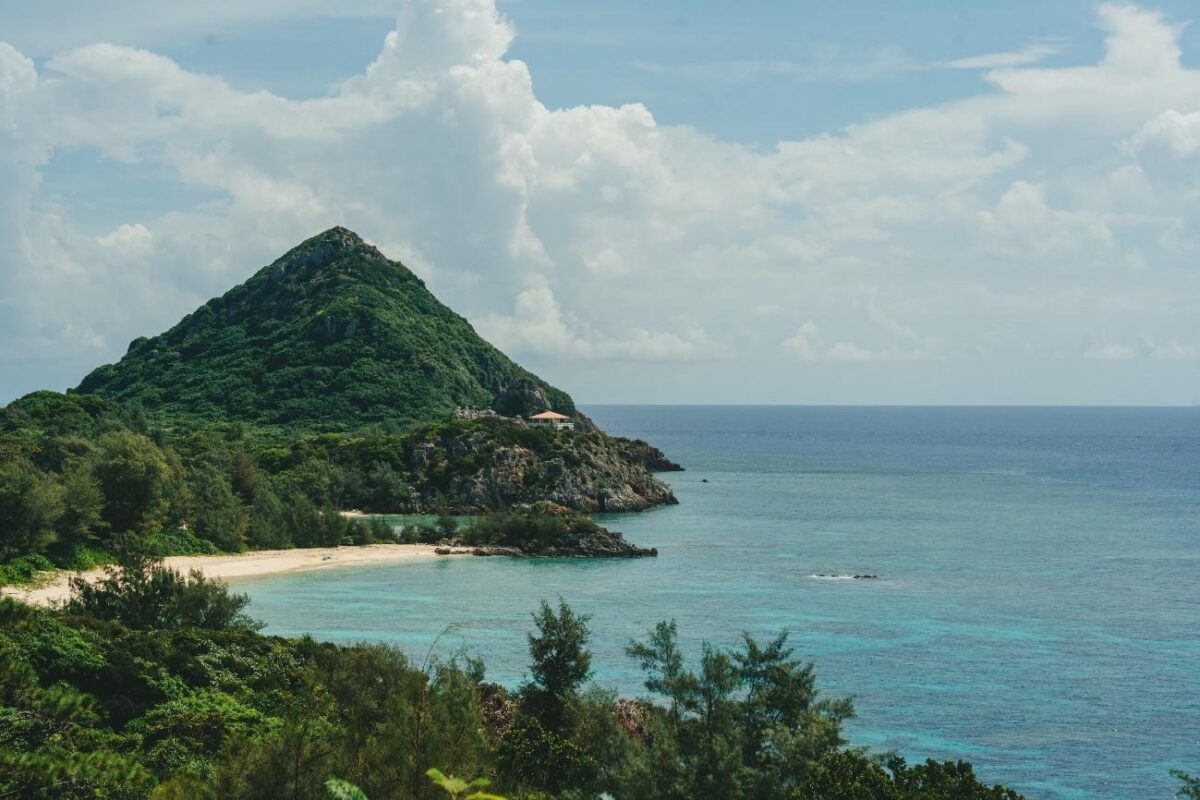Far out in the blue seas of southwest Japan lie a chain of verdant islands. Among them, Okinawa stands out with a culture refreshingly unique next to mainland Japan’s. Once a busy “maritime crossroads” connecting China, Southeast Asia, and Japan via culture and trade, Okinawa welcomed many influences and established a unique culture of its own. Sacred sites called utaki and uganjō can still be found throughout the islands, where people prayed for good harvests and honored their ancestors.
Izenajima: a small island surrounded by a shimmering emerald sea, and one of the best places to feel this original Okinawan spirit. It takes about one to two hours by car from Naha, followed by another hour on a ferry. On a map Izenajima looks tiny, but this island is actually the birthplace of the Ryukyu Kingdom which flourished from the 15th to the 19th century.
Here, a young man was born and later called King Shō En; he went on to found and become the first ruler of the Ryukyu Kingdom. Rising from a farming family to the throne, his life story is often described as a miracle:an ordinary young man who shaped a nation.
Today, Izenajima is still humbly proud of the king and his family’s legacy. Two locations in particular tell their story: Tamaudun Mausoleum (a kind of imperial/royal tomb) and the Mekaru Family Residence. A journey to this island reveals the origins, daily life, and gentle spirit of the Ryukyu Kingdom. If you plan to visit Shuri Castle in Naha, consider making the trip here as well; you’ll understand the story of the kingdom on a deeper, more personal level.
Tracing the Kingdom’s Beginnings: Tamaudun Mausoleum
Tamaudun is the mausoleum that honors King Shō En’s parents and sister.While It shares the same name as the royal mausoleum in Shuri, this location is considered the true origin; the spiritual root of the royal family.
As soon as you enter, you’ll feel the Okinawan belief of respecting and coexisting with nature. The entrance features a graceful arch built with coral limestone that leads into a quiet courtyard with an incredible view of the sea; a profound connection to the landscape. King Shō En built this mausoleum to honor his parents and his family’s legacy, as well as to never forget where he came from. It reflects a core value of the Ryukyu people: respect for family and the past. Historical records also suggest that an important fortress once stood here before the Ryukyu Kingdom, making this location even more symbolic.
More than just a resting place, the design, materials, and style of the tomb reflect strong cultural links with China and other parts of southeast Asia. The mausoleum is also tied to local rituals and beliefs, blending royal legacies with island traditions. Understanding this background makes a visit deeply moving; it feels as if prayers from centuries ago can still be felt by the island’s gentle breezes.

A Window Into Traditional Ryukyu Life: The Mekaru Family Residence
In the center of the island lies the Mekaru Family Residence, an 18th-century home of a noble family recognized as a nationally designated Important Cultural Property.
Its red-tiled roof, coral stone walls, and low eaves designed to withstand typhoons, all show the practical wisdom of the Ryukyu people. At the heart of the house is the ichibanza, a special room for welcoming gods and praying. The layout itself expresses the Okinawan philosophy of coexisting with nature and the spiritual world.
The Mekaru family is believed to be connected to King Shō En’s relatives and played important roles in island ceremonies and local governance. Their status as jitō, or local lords officially recognized by the royal government, shows the family’s long-standing importance. Although the current building was rebuilt in the Meiji era, the family lived here until the mid-1900s.
Now open for viewing, the preserved house offers a rare look into historical Okinawan life. Sitting on veranda and surrounded by the scent of wood, you may feel the lulling rhythm of daily life from long ago.

Illuminated Tours: History, Music, and Island Stories After Dark
This year, special evening tours began at Tamaudun and the Mekaru Residence.Under the darkness, the illuminated buildings appear completely different, almost as if scenes from the past rise into view.
A guide shared a beautiful Okinawan belief during one of the tours: “In old times, singing, dancing, and drinking together in front of the tomb was considered a form of memorial service: a joyful way of celebrating life and connection. “Hearing this, the true essence of these stories become real.”
With soft lights, music, and the guide’s storytelling, you can feel how the spirit of the Ryukyu Kingdom has been passed down through generations and still lives on through livelihoods and nature. Seven beams of light shone into the sky, like the Big Dipper surrounding Tamaudun, and created a powerful image as if the kings were still watching over the island with warmth and compassion.
It felt like a message of gratitude to the ancestors, and a gentle, unconditional hope for those living today.

A Small Island With a Big Heart: The Spirit of “Yuimaaru”
People on Izenajima still value “Yuimaaru,” the Okinawan idea of helping and supporting one another.This spirit also formed the foundation of the Ryukyu Kingdom under King Shō En. Connections between people, between humans and nature, and between the past and the present is the way of living in harmony that can be felt all over the island.Tamaudun preserves the pride of the royal family The Mekaru Residence shows daily life. And, the whole island expresses the “culture of the heart” that Okinawa is known for.
This isn’t a place for flashy tourism, it yields something far deeper and peaceful.
Visiting Izenajima means discovering not only the impressive history of the Ryukyu Kingdom, but also the warm spirit that the islanders have protected and perpetuated for centuries. Out on the calm sea, this small island continues to share its timeless stories with everyone who comes.


